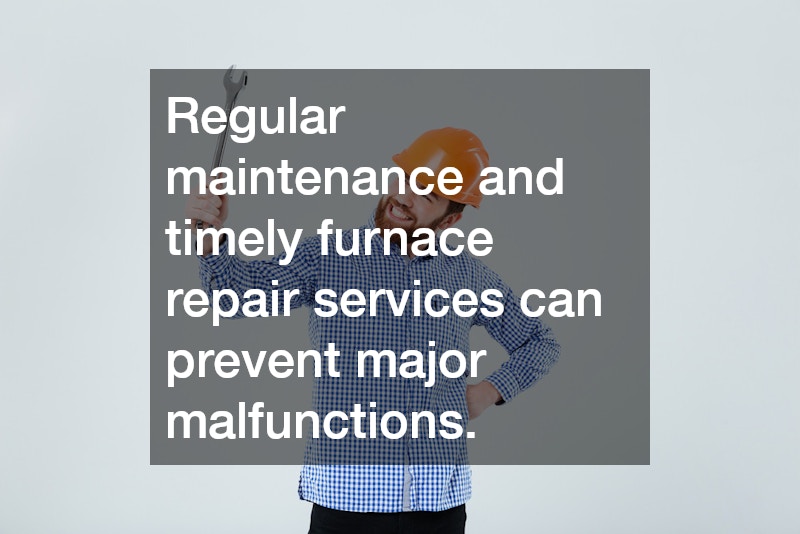Ensuring your home’s furnace is operating effectively is crucial, especially during the cold months. Noticing the signs that indicate it needs repair can save you from discomfort and high energy bills. In this article, we explore the top indicators your furnace requires professional attention and address some common questions people have about furnace maintenance.
How Do I Know If My Furnace Needs Repair?
Unusual Noises Coming from the Furnace
Furnaces often make some noise, but loud or unusual sounds may signal a problem. Banging, clanking, or squealing could indicate loose or damaged parts that need immediate attention.
Ignoring these sounds could lead to further damage and costly repairs.
For instance, a banging noise might point to a delayed ignition on a gas furnace. Squealing could be caused by a slipping or fraying blower belt. By addressing these noises early, you can prevent a minor repair from escalating into a major malfunction.
If the noises persist despite attempts to mitigate them, it’s crucial to seek professional help. A licensed technician will have the expertise to diagnose and fix underlying issues. Regular inspections can also help you catch these problems before they worsen.
Inconsistent or Insufficient Heat
Another sign your furnace may need repair is when it struggles to maintain consistent heat levels. Homes with uneven heating or insufficient warmth in certain areas might suffer from a failing furnace component. A prompt response could protect your comfort and wallet from high utility costs.
Various issues, such as a malfunctioning blower motor or clogged air filters, can cause heat inconsistency. These problems hinder the efficient flow of warm air, reducing your furnace’s effectiveness. Addressing these issues promptly can restore comfort and efficiency to your home.
If adjusting the thermostat fails to produce desired temperature changes, a professional inspection is warranted. Skilled technicians can identify and resolve mechanical or electrical failures within the system. Regular tune-ups can help ensure consistent performance and prolong the life of your furnace.
Increasing Energy Bills
A sudden spike in your energy bill without an obvious increase in usage could indicate a furnace issue. When your furnace becomes less efficient, it consumes more energy to achieve the same level of heating. This increased demand not only raises costs but also contributes to environmental impact.
Factors such as aging components, blockages, or poor maintenance can all contribute to inefficiency. Addressing these factors with timely repairs or replacements can reduce energy consumption. Staying vigilant about your furnace’s energy demands can help detect these issues early on.
Comparing this year’s energy bills with last year’s during the same season can reveal any discrepancies. If you notice an increase, it might be time to schedule a furnace repair service. An expert evaluation will provide both peace of mind and potential savings.
What Should I Do When My Furnace Shows Signs of Disrepair?
Check and Replace the Filter
A simple yet effective first step in addressing furnace issues is to check the air filter. A clogged filter constrains airflow, making your furnace work harder than necessary. Regularly replacing or cleaning filters can improve air quality and system efficiency.
Experts suggest checking the furnace filter monthly and replacing it every 3 months or more often if needed. This proactive measure can prevent more severe problems like overheating. Keeping the filter clean contributes to a longer lifespan for your furnace.
If you notice dust accumulation around the vent or have allergies acting up, it may be due to a dirty filter. Changing it can significantly improve both the system’s function and your home’s air quality. It’s a simple step with significant benefits for your furnace and indoor comfort.
Inspect the Thermostat Settings
The thermostat plays a critical role in the operation of your furnace. Incorrect settings or a failing thermostat can lead to heating issues. Evaluating its settings should be one of the first steps if you suspect furnace trouble.
Ensure that it is set to “heat” and at a temperature higher than the current room temperature. If it doesn’t respond or shows erratic behavior, a battery replacement or resetting might fix the issue. In more severe cases, a thermostat replacement could be necessary.
Modern thermostats offer advanced features like programmable settings and diagnostics, enhancing efficiency. Consider upgrading to a smart thermostat for greater control over your home’s climate. These devices can improve energy efficiency, comfort, and even save you money in the long run.
Recognizing and understanding the signs of furnace disrepair allows you to act promptly, ensuring your home remains warm and energy-efficient. Regular maintenance and timely furnace repair services can prevent major malfunctions and extend the life of your heating system. Don’t wait for smaller issues to escalate; if any of these symptoms appear, contact your local furnace repair experts today.
.

